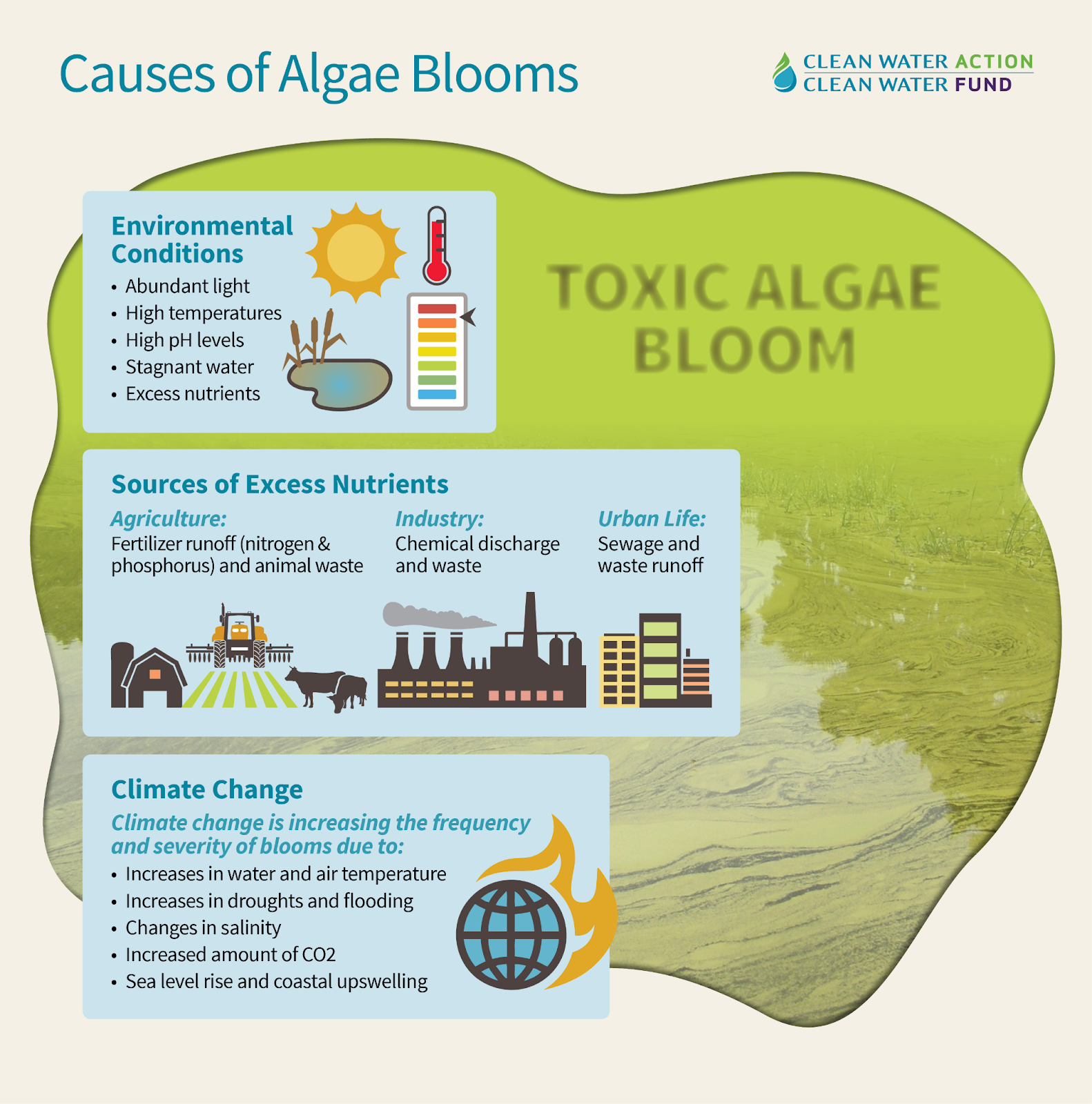Algal Bloom Devastates Marine Life | 17 May 2025
A massive toxic algal bloom, caused by algae Karenia mikimotoi (bloom-forming dinoflagellate), has severely impacted South Australia's coastline, leading to the death of over 200 marine species.
- Causes of Marine Death: The algal bloom has spread over 150 km of coastline, affecting biodiversity hotspots like Kangaroo Island, Yorke Peninsula, and Fleurieu Peninsula.
- Karenia mikimotoi produces toxins that suffocate marine life by damaging gills, attacking red blood cells, and disrupting the nervous system, leading to abnormal behavior and mass mortality.
- Additionally, marine heatwaves raised sea temperatures by 2.5°C and depleted oxygen, triggering algae blooms whose thick spread reduces oxygen levels, suffocating marine life.
- MHWs are extreme ocean events with sea temperatures rising 3-4°C above average for at least five days, often lasting weeks.
- Algal Bloom: An algal bloom is a rapid increase in algae population in freshwater, marine, or brackish waters, often visible as green, blue-green, red, or brown patches.
- While most are harmless and support marine life, harmful blooms called Harmful Algal Blooms (HABs)—threaten human health and ecosystems.
- It is caused due to the introduction of a nutrient (such as nitrogen or phosphorus) into an aquatic ecosystem.
- A red tide occurs when certain algae grow excessively, turning the water red, as well as brown.
| Read More: Red Tide |

